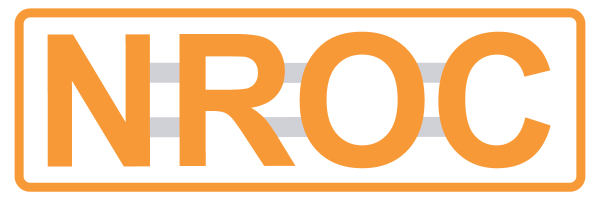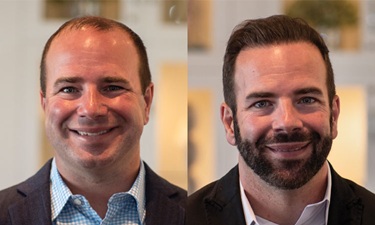Can the Upper Midwest drive digital innovation in manufacturing and logistics?
Legacy Manufacturing Hubs
Manufacturing and farming ecosystems in the US and around the world have developed around a combination of the following ingredients: raw materials (minerals, crops), energy (electric, hydro, wind, solar), logistics (bays/ports, rivers, roads), talent/labor pools, and viable operating economics. A combination of investment capital, balance sheet leverage, and public policy has provided the needed financial backing to scale up.
In the US, several manufacturing ecosystems have come to exist in different regions over the decades, focusing on aerospace/avionics, automotive, food and farming, healthcare, metals and mining, oil and gas, and semiconductors/electronic components/systems. Upper Midwestern states are prominent in this list. These ecosystems have been using current-generation industrial/process controls systems, heavy equipment, and ERP systems.
| Industry | Region | Anchor Companies |
| Aerospace/Avionics | California | McDonnell Douglas, Hughes Aircraft. |
| Kansas | Beechcraft, Cessna. | |
| Washington | Boeing. | |
| Automotive | Michigan, Indiana, Ohio | Chrysler, Ford, GM, Visteon. |
| North Carolina | Borg Warner, Bridgestone, Caterpillar, Continental, Cooper, Daimler, Denso, Freightliner, Goodyear. | |
| South Carolina | BMW, Mercedes, Bridgestone, Volvo, Magna. | |
| Food and farming | Central Valley, California | Del Monte, Dole. |
| Wine Country, California | Gallo, Mondavi, Jackson, J Lohr, Korbel, Rutherford, Sebastiani, Sutter, Wente. | |
| Minnesota | Cargill, General Mills, Land O’Lakes, Hormel Foods. | |
| Missouri | Monsanto. | |
| Wisconsin | Schreiber Foods. | |
| Iowa | Rembrandt, Burke, West Liberty. | |
| Idaho | Simplot. | |
| Healthcare | Minnesota | Boston Scientific, Mayo, Medtronic. |
| Illinois | Abbott Labs. | |
| Industrial Equipment | Illinois | Caterpillar. |
| Iowa | John Deere, Vermeer. | |
| Minnesota | Honeywell. | |
| Wisconsin | Rockwell Automation. | |
| Metals | Pennsylvania, Ohio | Bethlehem Steel, U S Steel, USX. |
| Mining and materials | Minnesota | 3M. |
| Oil and gas | New Jersey | Arco. |
| Texas | Exxon-Mobil, Schlumberger, Valero. | |
| Paper | Idaho | Boise-Cascade. |
| Semi-conductors | Silicon Valley | ICs – Broadcom, Intel, nVidia, Marvell, SanDisk/Western Digital. IC manufacturing equipment – Applied Materials, LAM Research. |
| San Diego | ICs – Qualcomm. | |
| Idaho | ICs – Micron. |
Table 1: US regions, manufacturing ecosystems, and key anchor companies.
Digital Manufacturing – Requirements
In the age of ‘traditional’ manufacturing, the resources needed included:
- Skilled labor.
- Power (electricity, coal, hydro/wind/solar).
- Raw materials, natural resources (e.g., farm products, ore, water).
- Railroad, shipping, air transport.
In the age of digital manufacturing, from design to shipping, the following capabilities are important:
- Internet infrastructure.
- Rapid prototyping.
- Automation – robotics, self-navigating vehicles.
- End-to-end integration with supply chain and logistic partners for real-time visibility.
- Advanced STEM professionals in computer science, materials science, and life sciences (clinical medicine, plant biology, molecular biology, and biochemistry).
- Digitally-literate labor with skills (e.g., workers who can operate analytic software or fix a clean room air shower to maintain low ppm particle levels).
- Predictive analytics for preventive maintenance, resource management, etc.
Advanced technologies useful for these capabilities include:
- IoT (e.g., for discrete automation, process controls, asset tracking, robotics, infrastructure management).
- Machine learning (e.g., for instrumentation & control).
- New materials, including nanomaterials.
- 3D printing for prototyping, small-batch quick-turn manufacturing, and on-demand inventory.
- Secure technologies such as block-chain (e.g., for transactions, contracts, logistics).
- AI/predictive analytics (e.g., for monitoring and control, preventive maintenance, ERP).
Next-generation digital manufacturing initiatives have taken root in regions where current manufacturing ecosystems have existed. For example, Tesla’s California factory is housed in the earlier NUUMI (General Motors and Toyota) plant in Fremont in Silicon Valley, where the plant was originally set up in 1960 by General Motors due to cheap land, the port of Oakland nearby, and a freight railroad along the Bay. Similarly, SpaceX (Hawthorne, CA) has leveraged design and manufacturing resources originally set up by McDonnell Douglas and Hughes Aircraft in the Los Angeles area near the port of Long Beach.
The Upper Midwest
Considering the extraordinary value creation of companies such as Tesla and SpaceX, there is a significant investment thesis in enabling next-generation manufacturing organizations to arise in the Upper Midwest, where many similar current-generation manufacturing ecosystems already exist.
Given the democratization (i.e., global availability) of some of the new technologies, the presence of global companies such as Google, Amazon, and IBM in most of the major cities in the Upper Midwest, and the significant academic centers across the region; highly-trained resources are available throughout the region to enable advanced digital manufacturing centers of excellence.
The Upper Midwest also has strong attributes to attract and retain relevant labor pools. Table 2 shows the relative desirability of different regions in the US as destinations for STEM workers. The statistics for the Upper Midwest, broadly including the greater Cincinnati, Columbus, Chicago, Denver, Madison, Minneapolis/St. Paul, and Pittsburgh areas, speak for themselves.
| Rank (1=Best) | Metro Area | Total Score | Prof Opptys | STEM Friendliness | Quality of Life |
| 1 | Seattle, WA | 73.60 | 2 | 4 | 15 |
| 2 | Boston, MA | 71.94 | 7 | 1 | 43 |
| 3 | Pittsburgh, PA | 65.90 | 12 | 11 | 9 |
| 4 | Austin, TX | 65.15 | 6 | 8 | 27 |
| 5 | Minneapolis/ St. Paul, MN | 64.95 | 19 | 6 | 17 |
| 6 | Madison, WI | 64.00 | 13 | 16 | 13 |
| 7 | Salt Lake City, UT | 62.96 | 9 | 14 | 18 |
| 8 | Springfield, MA | 62.80 | 36 | 2 | 7 |
| 9 | Chicago, IL | 60.71 | 49 | 13 | 8 |
| 10 | Atlanta, GA | 60.69 | 5 | 27 | 31 |
| 11 | Cincinnati, OH | 60.51 | 16 | 33 | 14 |
| 12 | San Francisco Bay Area, CA | 60.50 | 3 | 7 | 67 |
| 13 | Columbus, OH | 59.71 | 33 | 21 | 21 |
| 14 | Denver, CO | 57.73 | 10 | 24 | 37 |
| 15 | San Diego, CA | 57.39 | 59 | 23 | 16 |
| 16 | Sacramento, CA | 57.20 | 44 | 20 | 25 |
| 17 | Colorado Springs, CO | 57.00 | 17 | 54 | 20 |
| 18 | Worcester, MA | 56.88 | 43 | 3 | 65 |
| 19 | Richmond, VA | 56.58 | 8 | 32 | 44 |
| 20 | San Jose, CA | 55.79 | 18 | 18 | 53 |
Table 2: Desirability of cities in the US for STEM professionals. (Data Source: Richie Bernardo/ WalletHub, “2018’s Best & Worst Metro Areas for STEM Professionals”).
Superimposed with Table 1, Table 2 shows the opportunity for these regions to become magnets for next-generation manufacturing.
What Do the Next-Generation Manufacturing Innovations Look Like?
As a result, disruptive new companies are emerging in these regions, creating the investment opportunity to fund them from early-stage growth to scale-up. These companies are working with the incumbents shown in Table 1 to accelerate their evolution towards advanced digital manufacturing.
Examples of innovative companies focused on manufacturing and transportation in the upper Midwest include:
Proto Labs[i]– Rapid prototyping: allowing quick turnaround manufacturing.
FactoryFix[ii]– Contingent labor for equipment: predictive diagnosis for timely repair with skilled labor and relevant spare parts for better customer experience at lower cost.
Basin Commerce– River transportation: harnessing of shipping capacity on lake and river waterways using barge booking software.
Rambl[iii]- AI: sales call CRM logging and intelligence that analyzes calls for specific criteria and actions to surface insight.
Stemonix– Drug discovery: tissue manufacturing for testing potential side-effects of new drugs for neurological and cardiac diseases.
Aker– Crop management: Use of drones for crop management based on weather databases and image-based diseases detection.
The Four Legs of the Innovation Stool
Infrastructure, technology, labor, and capital are the four legs of the innovation stool. The Upper Midwest has all of these.
Through new digital manufacturing technologies focused on topline and bottomline benefits, today’s manufacturing ecosystems are ripe for significant new value creation.
At Great North Labs, we are focused on providing early-stage capital to innovators in the Upper Midwest, with an emphasis on next-generation manufacturing. We leverage partners and advisors with market and operating experience in manufacturing. We invest in, and provide guidance and advisory resources to technology startups like FactoryFix that are poised to disrupt the traditional manufacturing and logistics industries in the Midwest.
[i] Donald Krantz, Director at Proto Labs, is an advisor to Great North Labs
[ii] FactoryFix is a Great North Labs portfolio company
[iii] Rambl’s co-founders, Mitch Coopet and Brian Bispala, are advisors to Great North Labs






